
The Moon Is a Harsh Mistress is a 1966 science fiction novel by American writer Robert A. Heinlein about a lunar colony's revolt against absentee rule from Earth. The novel illustrates and discusses libertarian ideals. It is respected for its credible presentation of a comprehensively imagined future human society on both the Earth and the Moon.

Algirdas Jonas "Algis" Budrys was a Lithuanian-American science fiction author, editor, and critic. He was also known under the pen names Frank Mason, Alger Rome, John A. Sentry, William Scarff, and Paul Janvier. He is known for the influential 1960 novel Rogue Moon.

Robert Silverberg is an American author and editor, best known for writing science fiction. He is a multiple winner of both Hugo and Nebula Awards, a member of the Science Fiction and Fantasy Hall of Fame, and a Grand Master of SF. He has attended every Hugo Awards ceremony since the inaugural event in 1953.

The Past Through Tomorrow is a collection of science fiction stories by American writer Robert A. Heinlein, all part of his Future History.
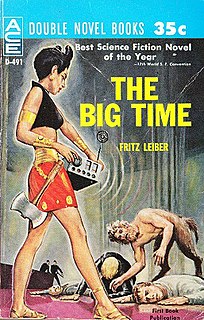
The Big Time (1958) is a short science fiction novel by American writer Fritz Leiber. Awarded the Hugo Award during 1958, The Big Time was published originally in two parts in Galaxy Magazine's March and April 1958 issues, illustrated by Virgil Finlay. It was subsequently reprinted in book form several times. The Big Time is a story involving only a few characters, but with a vast, cosmic back story.

The Science Fiction Hall of Fame, Volume One, 1929–1964 is a 1970 anthology of English language science fiction short stories, edited by Robert Silverberg. Author Lester del Rey said that "it even lives up to its subtitle", referring to the volume's boast of containing "The Greatest Science-Fiction Stories of All Time".
The first Golden Age of Science Fiction, often recognized in the United States as the period from 1938 to 1946, was an era during which the science fiction genre gained wide public attention and many classic science fiction stories were published. In the history of science fiction, the Golden Age follows the "pulp era" of the 1920s and 1930s, and precedes New Wave science fiction of the 1960s and 1970s. The 1950s are a transitional period in this scheme; however, Robert Silverberg, who came of age in the 1950s, saw that decade as the true Golden Age.
Thomas L. Sherred was an American science fiction writer.
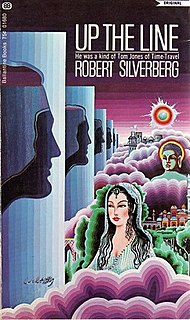
Up the Line (1969) is a time travel novel by American science fiction author Robert Silverberg. The plot revolves mainly around the paradoxes brought about by time travel, and is considered an example of the more-sexually permissive era of late 1960s American science-fiction, a reflection of the counterculture of its day. It was nominated for a Nebula Award for Best Novel in 1969, and a Hugo Award for Best Novel in 1970, but lost to Ursula K. Le Guin's The Left Hand of Darkness both times.
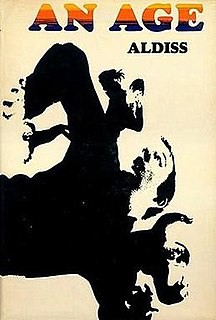
An Age is a 1967 science fiction novel by English writer Brian Aldiss. The book, set principally in 2093, combines the popular science fiction themes of time travel, totalitarian dystopia, and the untapped potential of the human mind. It was nominated for a Ditmar Award in 1969 in the "Best International Science Fiction of any length, or collection" category.

To Live Again is a 1969 science fiction novel by American writer Robert Silverberg.
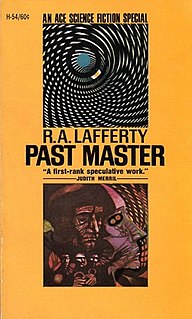
Past Master is a science fiction novel by American writer R. A. Lafferty, first published in 1968. The novel follows the attempt of a future Utopian society in preventing its decline, by bringing Sir Thomas More to the year 2535.
A fix-up is a novel created from several short fiction stories that may or may not have been initially related or previously published. The stories may be edited for consistency, and sometimes new connecting material, such as a frame story or other interstitial narration, is written for the new work. The term was coined by the science fiction writer A. E. van Vogt, who published several fix-ups of his own, including The Voyage of the Space Beagle, but the practice exists outside of science fiction: The use of the term in science fiction criticism was popularised by the first (1979) edition of The Encyclopedia of Science Fiction, edited by Peter Nicholls, which credited van Vogt with the creation of the term. The name “fix-up” comes from the changes that the author needs to make in the original texts, to make them fit together as though they were a novel. Foreshadowing of events from the later stories may be jammed into an early chapter of the fix-up, and character development may be interleaved throughout the book. Contradictions and inconsistencies between episodes are usually worked out.
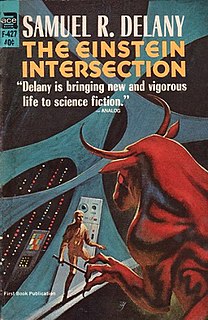
The Einstein Intersection is a 1967 science fiction novel by Samuel R. Delany. It won the Nebula Award for Best Novel in 1967 and was nominated for the Hugo Award for Best Novel in 1968. The title is a reference to Einstein's Theory of Relativity connecting to Kurt Gödel's Constructible universe, which is an analogy to science meeting philosophy. Delany's intended title for the book was A Fabulous, Formless Darkness.
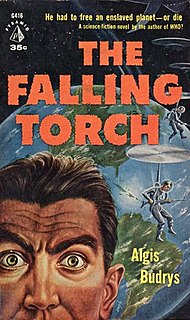
The Falling Torch is a 1959 science fiction novel by American writer Algis Budrys. A 1999 Baen Books edition was very slightly rewritten, and includes one entirely new chapter.

Man of Earth is a science fiction novel by American writer Algis Budrys, first published in 1958 by Ballantine Books. "The Man from Earth", a "greatly different" earlier version of the story, was published in the debut issue of Satellite Science Fiction in 1956.

The Watch Below (1966) is a science fiction novel by British writer James White about a colony of humans stranded underwater in a sunken ship, who survive by air pockets, and a water-breathing alien species in search of a new home. The two generation ships encounter each other in the Earth's ocean.
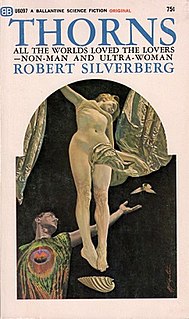
Thorns is a science fiction novel by American author Robert Silverberg, published as a paperback original in 1967, and a Nebula and Hugo Awards nominee.
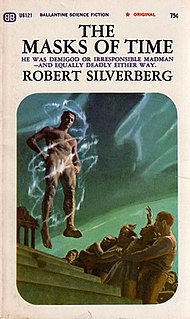
The Masks of Time is a science fiction novel by American author Robert Silverberg, first published in 1968. It was a nominee for the Nebula Award in 1968.

Alpha 2 is a science fiction anthology edited by Robert Silverberg, first published as a paperback original by Ballantine Books in November 1977. No further editions have been issued. .


















